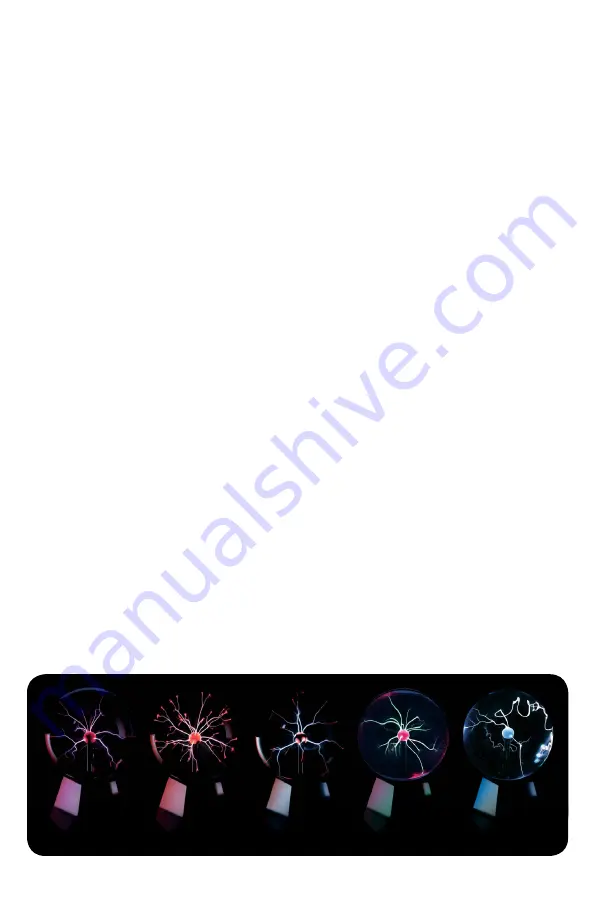
Page 8
What’s Involved In Creating Different Plasma
Effects?
To create a particular plasma effect, rare gases must be combined in
exact proportions and at a specific pressure. This gas mixture must
then be matched to the volume of the globe and to the electrical
characteristics of the power supply in order to obtain the desired
plasma effect. The pressure of the gas mixture plays a large part in
determining the shape of the plasma effect. In general, the higher
the pressure of the gas, the thinner and more sharp the plasma arcs
will be. The lower the pressure, the wider and softer the arcs will be.
When the pressure is low enough, a unique effect becomes possible
at reduced power levels, somewhat like a glowing aurora borealis
around the electrode core.
Each gas that is used has particular colors and properties that are
peculiar to it. For example, neon gives off a reddish-orange color
when charged, krypton gives off a white color, xenon gives off a
blueish color, and argon gives off a sort of purple color. By
combining different gases, one is able to control the color, shape,
and motion of the plasma effect. “Rare” gases (also known as
“noble” gases) are used for their unique properties and because of
their low chemical reactivity—this ensures that the gases will not
react with each other and degrade the plasma effect. It also ensures
that the gas mixture will not break down over time.
Some of our various plasma globe effects.
















